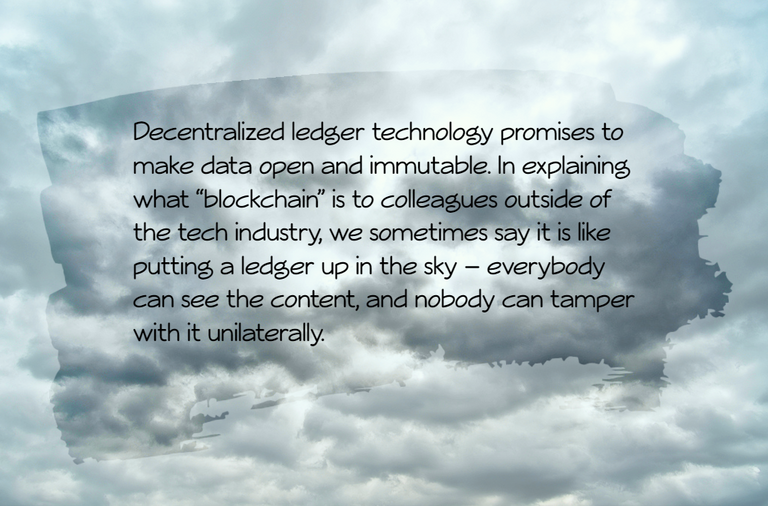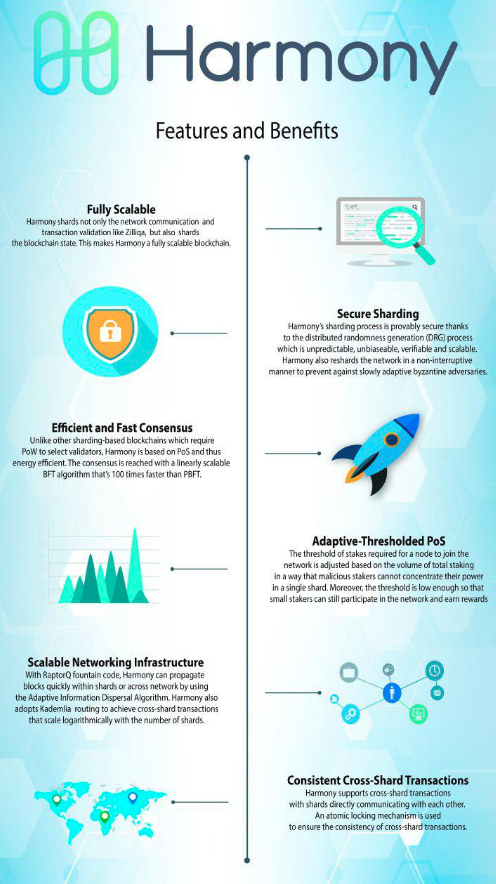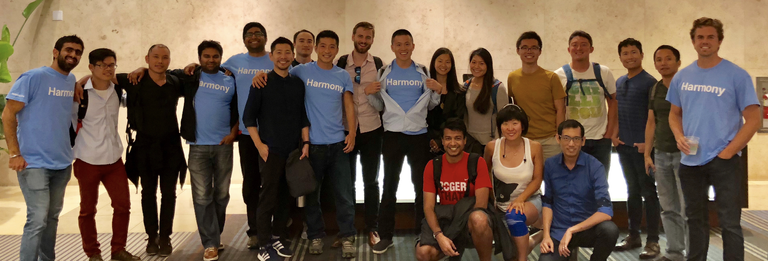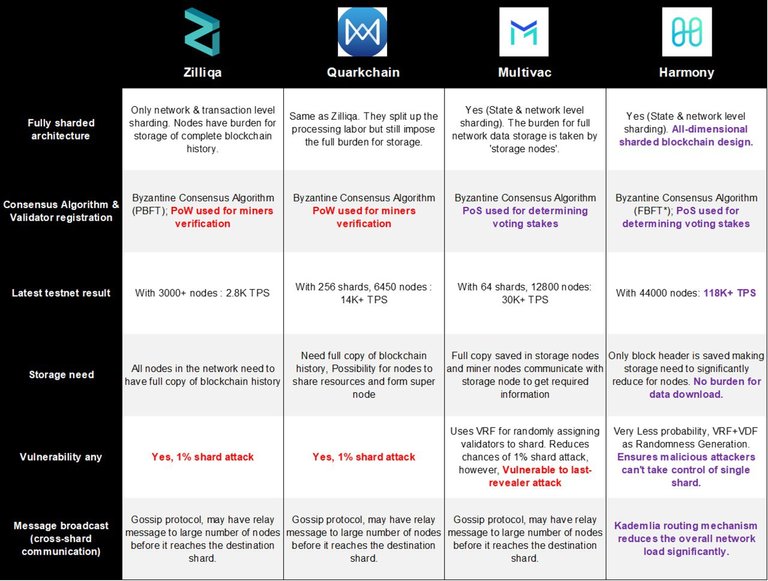San Francisco blockchain startup with a team comprised of ex-engineers from Google, Amazon, Microsoft, and Apple gearing up for Blockchain evolution - Harmony

Introduction
There was one unique finding for me this week which surprised me more than a new video clip from Rammstein, and it was a technological manifest called Harmony.

There was one unique finding for me this week which surprised me more than a new video clip from Rammstein, and it was a technological manifest called Harmony.
Decentralized open ledger technology for open and immutable data sharing.
High-performance blockchain protocol that can scale to serve to the applications of the future with a global range with furious speed and stable latencies. The infrastructure for ten billion people. Goal to ameliorate the whole blockchain technology by enhancing it on all of its levels.
The platform on top of which you can host Decentralized Exchanges, power AI Data Marketplaces, experienced uncheatable gaming and unleash the next wave of scientific innovation that seems both so promising, yet out of reach with today’s systems.
Scalability is still the most missing piece in a public blockchain. Along with that is the high transaction fee. Low-tps blockchains like Ethereum (which gave us a possibility to create a lot of new stuff, Solidity, Metamask, Remix, Truffle,..) can't have a low transaction fee because of the overall system inefficiency. However, with high throughput, high-efficiency blockchain like Harmony, they can lower the transaction fee by at least an order of magnitude because the cost to process a transaction is much lower in a sharded blockchain they are creating.
With high scalability and low fee, it will trigger a lot more untapped use cases such as interactive gaming, decentralized exchange, etc.
Even though Harmony has several competitors (look EOS, Zilliqa, Hasgrapg, Thunder, Dfinity, Kadena and Algorand), we can find them different very quickly.
Harmony ‘s Core competitive difference is the potential to achieve Data as Universal Income via two complementary technologies that no one has utilized in the blockchain space yet.
By innovating on both the protocol and network layers, Harmony provides the world with a scalable and secure blockchain system that can support the emerging decentralized economy.
Harmony can serve as a solution to the problem of data hoarding in science with the help of blockchain and bring new hope in the shape of Data Marketplace. This and blockchain based gaming could lead to the mass adoption of the blockchain.
Let me introduce you to Harmony.

Goals
Open ledger for the next 10B people with an open consensus, permissionless by design that creates the base of the most valuable blockchain network.
So, are they able to design such an architecture that will allow them to keep improving towards achieving what they say? The answer to this question could be sharing which allows growing the throughput linearly with the number of nodes in the network and so that it can be limitless. For doing so, they would need a global network.
The team is very very rich in technical background, and they have a top-notch company experience since is composed of ex-Google, Amazon, Microsoft and Apple engineers, and 2 Ph.D.s and one Ph.D. candidate on top of that.

They want to be cost-effective. They want to be effective in reaching their goal of 100k TPS. They use what's already working and moving it forward, and that's how evolution works.
100k TPS is their goal, and they want to design for that endgame at the very beginning. They know that you can't deploy humongous amount of people on the platform like Ethereum, which is one of the most revolutionary blockchain-based applications of the current time, but it's not designed for such a purpose. They strive to get this goal done by improving the Transport network, Consensus; at least 10x for each. So, let's take a look at how exactly they want to do it. This will be a Need For Speed.
Gearing for 10x Speed Up
1) Transport network
Using of Google's QUIC build on UDP (googles UDP powers 35% of Google's traffic, or 7% of the Internet). UDP is an evolution of TCP.
TCP works on the back and forth communication you know from a telephone communication, where one person can ask another side to repeat since the first person didn't hear or understand. UDP uses one-way communication, like Radio broadcasts or TV-sets. If you miss something, just keep listening because the transmission is live.
Next important attribute is Bloom tables/Filters. They enable communication between shards in constant size O(1), rather than proportional to the total transaction size O(n)(Bitcoin in similar case uses template deltas). These tables tell you whether or not the desired item does not exist in the set of searched items, or whether it may be there. This leading to the speeding up of computation.
The last component of Transport network armory is Huawei 5G which provides 1 ms Latency: and this could be the key element for reaching those 10 Tx/s(with 5G). They are reducing the time of relay of packets using quick UDP, reducing the time to understand if the data is in a set or not, using bloom filters and then also using the 5G network (so yes, they can achieve what they want to achieve)
2) Consensus
Harmony has a uniquely designed and crafted consensus. It's based on the lessons learned from Omniledge, Rapidchain, industry projects and many other types of research.
This solution is two-fold. First, the network implements Proof of Stake (PoS), paired with a modified Practical Byzantine Fault Tolerance (PBFT) consensus algorithm called Fast BFT(FBFT). Second, they use sharding, which distributes “not only network communication and transaction validation like Zilliqa, but also shards the blockchain state,” according to the whitepaper.
Key features are:
Representative sharding: Adaptive POS-based sharding in their new design
Gradual transition: They adopted Cuckoo-rule based resharding (it's still a gradual transition, even less interruptive to the network)
- Atomic shard-commit: Simplistic approach of using receipt-based cross-shard transaction with debit and credit phases
- Pruning checkpoints: Since they moved to the Account model, they won't have checkpoint pruning, but they will have fast state synchronization
- State sharding where each shard holds a subset of the blockchain state
- Epoch: Omniledger prevents the corruption of shards by reshuffling all nodes in the shards at a fixed time interval called Epoch
Harmony adopts a different approach with proof-of-stake (PoS) as the validator registration or Sybil attack prevention mechanism
Shard-driven approach of cross-shard communication enhanced by Kademlia routing protocol for reducing the communication complexity; reducing the overall network load in a sharded blockchain
Beacon chain is the chain where stakers deposit their tokens to become validators. Chain for processing transactions, generation of the random number used for attack prevention and accepting stakes.
RaptorQ fountain code combats the problem of packet loss and latency spikes
Core technology
Deep Sharding
Problem: Sharded blockchain projects (like Zilliqa) typically only shard the transactions (ie. transactions are processed in parallel via multiple nodes, rather than by every node). When those transactions are recorded on the chain, every node must acknowledge the transaction before it can be recorded.
Harmony Solution: Deep Sharding, a term coined by our project, goes a level deeper. Instead of parallel processing just the transactions, our project is able to achieve consensus on multiple transactions in parallel. By accurately identifying nodes that are relevant to the transaction and only involving those nodes (instead of everyone in the chain), our project is designed to be a much faster blockchain.
Zero Knowledge Proof
Problem: In order for someone to benefit from your data (Eg. Facebook or Google), they must have access to your entire data repositories we've seen, this raises the risk of privacy issues.
Harmony Solution: Zero-Knowledge Proofs allow a company to use the data without knowing the exact details. For example, a company can find out where you are, not by knowing your exact location, but by getting verification of a range of potential locations you might be, hence maintaining your privacy.
Future use case
Harmony blockchain will be able to put the ownership of user data back to the user and catch value for them with their data. And when this will be achieved, a lot of internet users will get rewarded for the data they generated. On top of that, personal data will be kept in a secure, access-controlled place, that the owner has full control of their data. There won't be leaking concerns because all the data will be protected by blockchain cryptography and you can share them and use them under your rules only. This process is called: Data as Universal Income
Data is the new gold. It is estimated that both Facebook and Google generate over 85% of its revenue from Ads. That’s 85% of 46 billion and 136 billion dollars that these companies generated in 2018. They need your data for that. With Harmony, you can start your own Data as a Universal Income journey (with science researchers, social dynamic researchers, media, and so on).
Harmony and other projects
Harmony and Ocean protocol
Ocean (“data infra project”) is a data sharing protocol. Harmony can potentially collaborate with Ocean to enable to Data as Universal Income dream.
Harmony vs Ethereum
Ethereum is second gen blockchain where the transaction throughput is low and fees are high (layer 1 blockchain). Harmony will be the next-gen blockchain that solves the speed problem and brings down Tx fee to the minimum level where many more use cases will be feasible (like gaming or Defi).
Harmony vs Ontology
Ontology is a blockchain that's more focused on enterprise use cases, while Harmony is more general consumer focused.

Summarization
Solid team, a lot of technical background experiences, geat vision, successful start-up, ability to contribute to the blockchain technology and supportive community.

(Prefer Tequila) at Telegram or shoot a shouted "Tweet".
Never stay tuned
With respect, Mickey